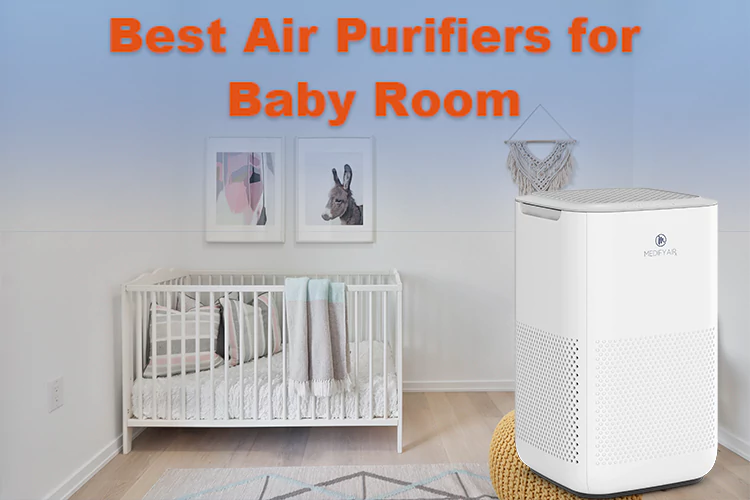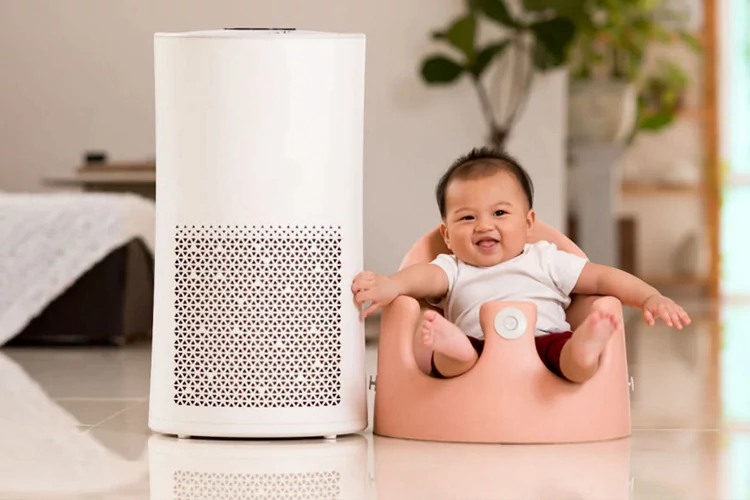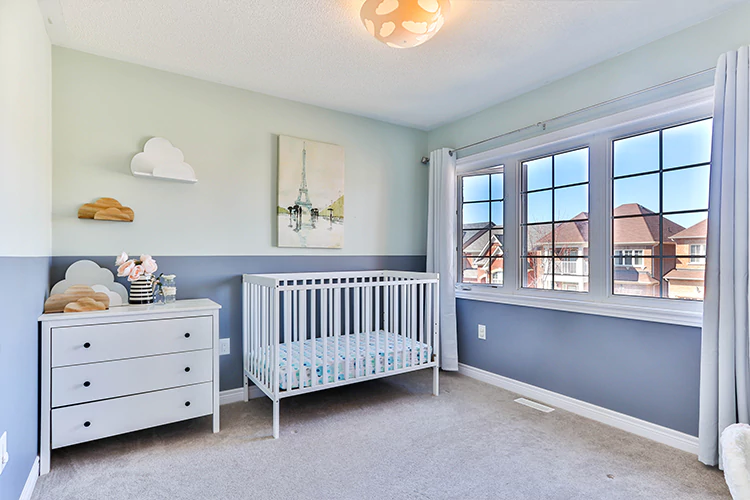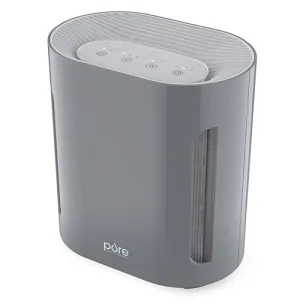The Great Air Debate: Does Your Baby Need an Air Purifier?

Written By: Dr Fahad Yasin
- Updated On:

In a world that might be described as a bustling marketplace of invisible commodities, where most of our transactions remain intangible, the air we breathe has taken center stage. Once an afterthought, it’s become a premium asset, especially for our most vulnerable: babies.
From the chaos of Wall Street to the serenity of a baby’s room, risks lurk. Our environment, as if trading in allergens and pollutants, has seen an aggressive bull market. Respiratory issues, the bear traps of this market, are becoming increasingly complex for the tiny lungs that have just begun their journey.
Imagine, for a second, being thrust into a world where the very thing that sustains you – the air – might also be your adversary. That’s the reality for our infants. Hence, the idea of a guardian – an air purifier – isn’t just a luxury; it’s almost a necessity.
Table of Contents
Should a Baby Have an Air Purifier?
It’s a conundrum: Should a parent invest in an air purifier? Consider these stats:
Indoor vs. Outdoor: Research indicates that indoor air can be 2-5 times more polluted than its outdoor counterpart. Trading in pollutants such as chemicals from cleaning agents, pet dander, mold spores, and harmful VOCs, this indoor market appears to be more bearish than one might think.
Breathing Patterns: Babies, taking about 40 breaths a minute, nearly double that of adults, are rapidly consuming this air, potentially absorbing the invisible hazards that come with it.
There are some risk mitigation strategies in this volatile market:
Pet Restriction: Just as a trader might be restricted from certain stocks, pets might need to be restricted from entering the baby’s domain.
Indoor Smoking: Akin to a bad investment, this can only depreciate the air’s quality.
Eco-Cleaners: Think of these as the ethical investments of cleaning. Less residue, better returns in terms of air quality.
Ventilation: Regular influxes of fresh air can stabilize this market, making it less volatile.
Yet, for those looking for a more holistic hedge against this risk, an air purifier stands out as a promising option.
Top 3 Best Baby Air Purifiers
- Filtration: Boasts a 99.97% success rate against pollutants, with an added UV-C bonus against germs.
- User Experience: Silent but potent, energy-efficient, and equipped with an intuitive interface.
- Specifications: A trinity of filters including a pre-filter, a HEPA filter, and a carbon layer. complemented by three distinct speed settings.
Pros
- Energy efficient
- Easy to use
- It kills bacteria, germs, and viruses
- Automatic timer
- Filter change indicator
Cons
- The lights are too bright
AirDoctor 1000 is more powerful and has better purification (it can trap smaller particles) than PureZone Enrichment, but it can’t be placed at 1 because of the size. It is a bit too tall.
Efficacy: It trades well in the small particle market, outperforming even the blue chips.
Features: A smart system that adjusts to market conditions, with a whispering demeanor and a green energy portfolio.
It has an auto mode, which is such a good feature. You can turn it on and forget about it. It will adjust fan speed settings based on air quality in the baby room.
Pros
- Powerful and Great even for Larger Baby Rooms
- Can trap the smallest airborne particles
- Auto mode with auto monitor
- Quiet and energy efficient
Cons
- A bit too tall
In the grand mosaic of consumer-driven products, every so often emerges a gem that manages to combine the best of functionality, design, and efficiency. In this world of air purifiers, that gem is Medify Air MA-15.
Medify Air MA-15 Air Purifier: Space-Saver Supreme
- Dimensions: A mere 7.5 x 12.2 inches.
- Energy Consumption: Only 18W, a paradigm of energy efficiency.
- Performance: Despite its petite size, it purifies rooms as vast as 330 sq. ft. every 30 minutes.
- Filter: A True-HEPA filter capturing a spectrum of airborne particles.
If you like this air purifier, you can also check the Medify Air MA-22 model, which is very similar, just with a different design.
Pros
- Lightweight and Small in Size
- Energy Efficient
- Child Lock
- Dimmer for night use
- Quiet operation
Cons
- You have to buy new filters every four months. Otherwise, you lose the warranty.
Why Are Babies So Vulnerable to Air Pollutants?
Our tiny bundles of joy are, unfortunately, also bundles of vulnerability when it comes to air pollutants.
Physiological Nuances: Babies’ defense mechanisms are still developing.
Breathing Patterns: Rapid and shallow, making them susceptible to airborne toxins.
Body Mass Ratio: Lesser body mass means even low pollutant concentrations pose risks.
Growth Dynamics: Their respiratory, neurological, and immune systems are in a rapid growth phase.
Geographical Positioning: Babies are closer to the ground, a hotspot for pollutants.
Combine these factors, and you have a compelling case for pristine air quality in their surroundings.
The Hidden Dangers Lurking in Your Nursery

The aesthetics of a baby’s nursery might be deceptive. Beneath the pastel shades and soft toys could lurk hidden adversaries.
Silent Threats in Your Baby’s Room
Crib Mattress: Often laced with harmful chemicals due to treatments.
Crib Material: Carcinogenic formaldehyde is a common component.
Babycare Products: A staggering 67% contain potentially cancerous chemicals.
Paint: While modern paints mostly eschew volatile organic compounds, caution is always advised.
The Health Effects of Bad Air Quality
The impact of poor air quality is manifold, both immediate and insidious.
Without the help of a device like an air purifier to get rid of things like volatile organic compounds, pet dander, mold, and allergen from your baby’s room may result in severe health complications.
The Grim Aftermath of Bad Air
Respiratory ailments like asthma and bronchitis.
Organ and nervous system damage.
Potential carcinogenic effects.
Physical discomforts ranging from headaches to fatigue.
Fortunately, technology provides a respite: air purifiers that curtail these airborne toxins.
What is the Best Type of Air Purifier for Infants, Babies, and Toddlers?

True HEPA Filter
This type of filter excels at getting rid of familiar sources of pollution at home. Captures up to 99.97% of minuscule particles.
Activated Carbon Filter
Targets and neutralizes volatile organic compounds and odors.
As the particles move across the filter, they will be absorbed and sealed without any chance of leakage.
Features to Look for in a Nursery Air Purifier

Features Worthy of Your Nursery
- UV-C Light: A germ assassin that ensures pathogens are neutralized.
- Build Quality: Durability is non-negotiable.
- Adaptable Brightness: After all, night-time should feel like night.
- Acoustic Comfort: Quiet operation ensures your baby’s dreams are undisturbed.
- Convenience Modes: Modern purifiers come with a suite of user-friendly features.
Warning: Types of Air Purifiers to Avoid
Ozone Generator
Their ozone emissions can be harmful causing severe problems related to the nasal passages, eyes, and respiratory system.
Ionic Air Purifier
Their ozone emissions can be harmful.
And young kids shouldn’t be exposed to any ozone as it may negatively affect their organs and respiratory system.
For smooth operation and optimal efficiency, follow the tips below when using an air purifier in the baby room.
Optimizing Your Air Purifier’s Efficiency
- Place out of reach.
- Position near potential odor sources, e.g., diaper rail.
- Maintain filter hygiene.
- Ensure stable positioning.
- 24/7 operation is ideal for consistent air quality.
What Is Better Air Purifier Or Humidifier For Baby?
Both cater to distinct needs. While purifiers cleanse, humidifiers balance moisture. When used judiciously, both can complement a baby’s room.
Both devices are good vor baby room if used on point.
Summary
Prioritizing air quality is not just about comfort; it’s a health imperative, especially with infants in the picture. With the right purifier, like Medify Air MA-15, you’re not just investing in a product but a promise – of clean, safe air for your precious one.




